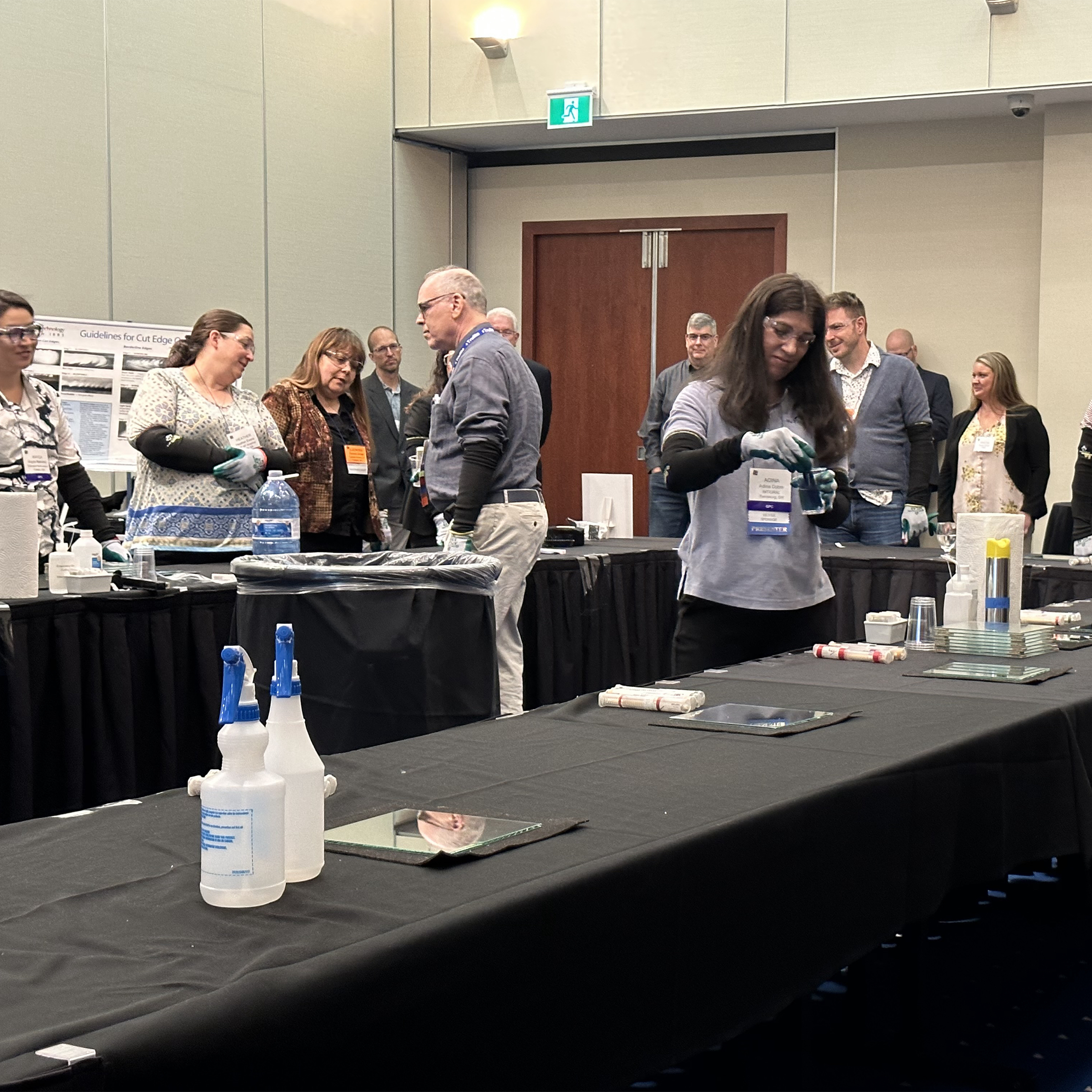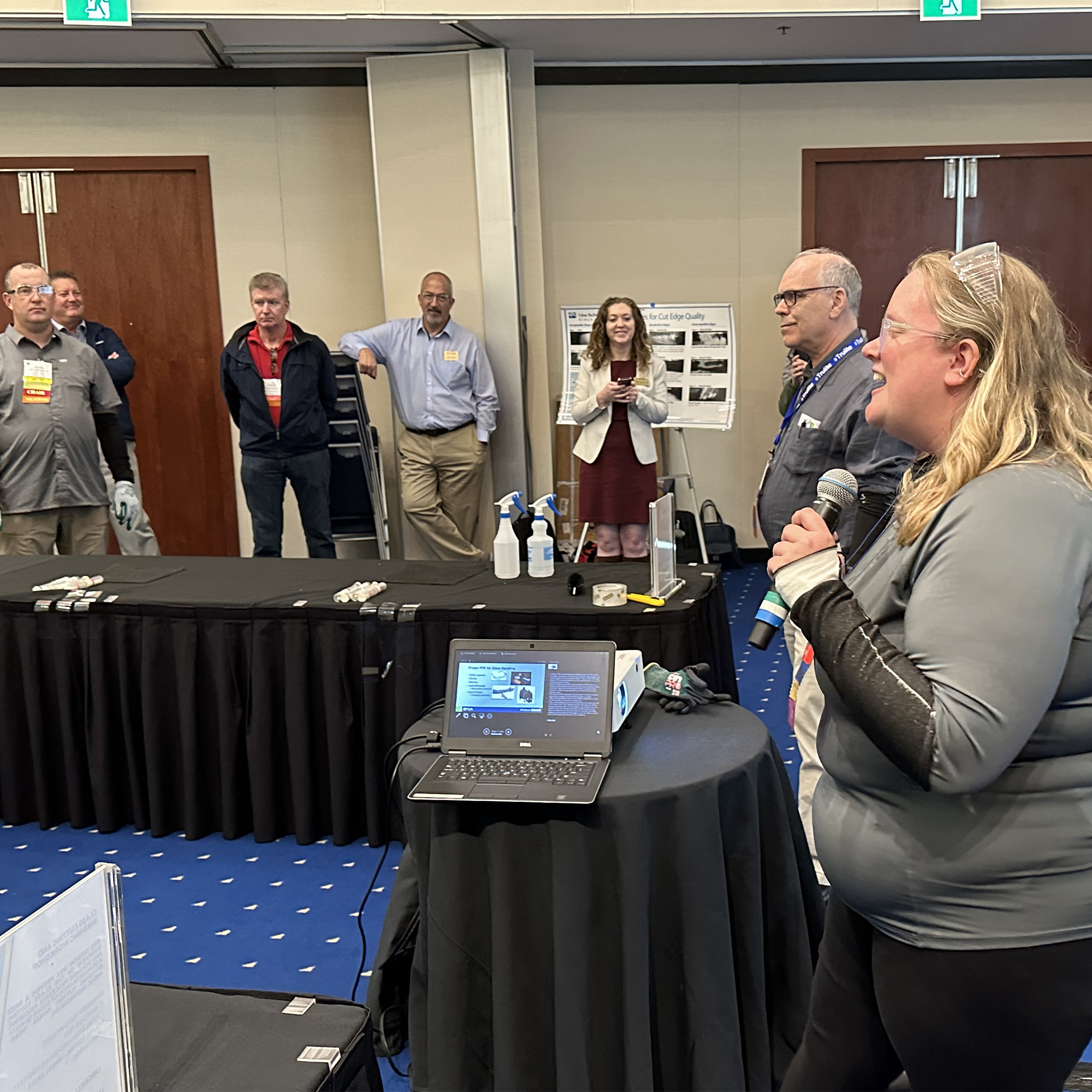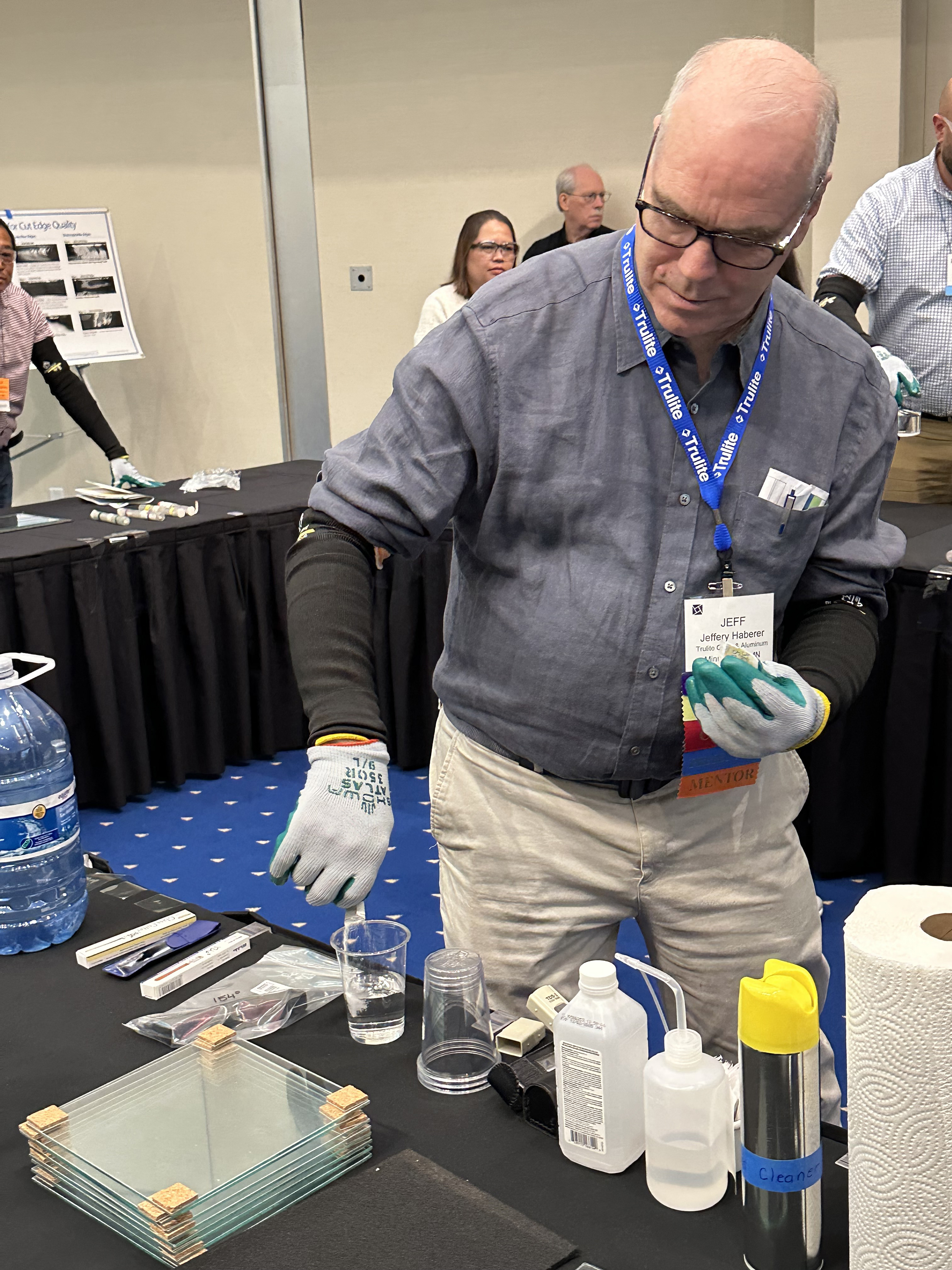Conference participants try their hands at glass cutting, washing in FGIA Workshop
Posted on June 21st, 2023
 Schaumburg, Illinois – Several participants at the Fenestration and Glazing Industry Alliance (FGIA) Summer Conference had the unique opportunity to learn proper techniques for both cutting and washing glass in a hands-on workshop in Vancouver, B.C. Presenters Meghan Chamberlin (Lippert), Adina Dobre (Intigral) and Jeff Haberer (Trulite Glass and Aluminum Solutions) led nearly 30 participants in two different sections of this condensed version of the popular FGIA Insulating Glass (IG) Fabricators Workshop. Supplies, including glass, were donated by Vitrum Glass Group.
Schaumburg, Illinois – Several participants at the Fenestration and Glazing Industry Alliance (FGIA) Summer Conference had the unique opportunity to learn proper techniques for both cutting and washing glass in a hands-on workshop in Vancouver, B.C. Presenters Meghan Chamberlin (Lippert), Adina Dobre (Intigral) and Jeff Haberer (Trulite Glass and Aluminum Solutions) led nearly 30 participants in two different sections of this condensed version of the popular FGIA Insulating Glass (IG) Fabricators Workshop. Supplies, including glass, were donated by Vitrum Glass Group.
Safety First
Before any demonstrations took place at the workshop, all participants put on personal protective equipment (PPE), including properly rated gloves, arm sleeves and eye protection.
 Washing Glass
Washing Glass
Chamberlin began the presentation by covering the process of washing and cutting glass, noting that adhesion is an important part of a successful IG unit. “Why is clean glass so important?” Chamberlin asked rhetorically. “Adhesion! If things aren’t sticking together, your IG unit will fail.” She also noted that the water used must not only be clean, but rid of total dissolved solvents (TDS). Haberer and Dobre went on to explain how to test TDS levels, demonstrating how adding things like sugar or salt can change the TDS reading.
Other advice Chamberlin gave was to not use recycled water to clean glass and to never stop glass in a washer while the brush is still spinning. “The brushes can cause low-E burn, and your customer will not be happy,” said Chamberlin. “Also, make sure gloves don’t leave any residue.”
The presenters demonstrated an adhesion test, which showed that distilled water creates better adhesion while common glass cleaner creates the worst. “Most household cleaners leave a shiny finish but that’s a disaster for adhesion in IGUs,” said Chamberlin.
 Cutting Glass
Cutting Glass
When it comes to cutting, Chamberlin said, there are four components:
1. Angle
2. Speed
3. Diameter
4. Force
Participants practiced cutting glass by scoring and then carefully breaking the glass. They first tried this process without cutting fluid and then with – noting it is considerably easier to do with fluid than without.
“Remember, the thicker the glass, the lower the cutting angle,” said Chamberlin.
For more information about FGIA and its activities, visit FGIAonline.org.
Your trusted industry resource, setting the standards for fenestration and glazing.
###
